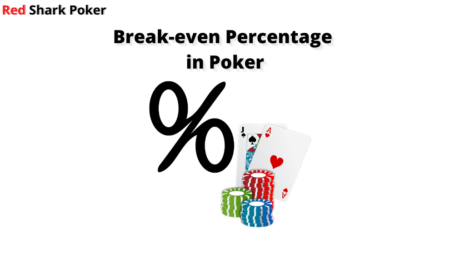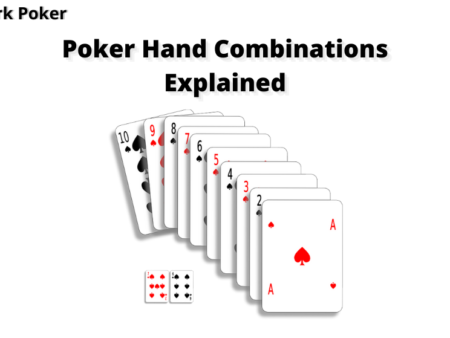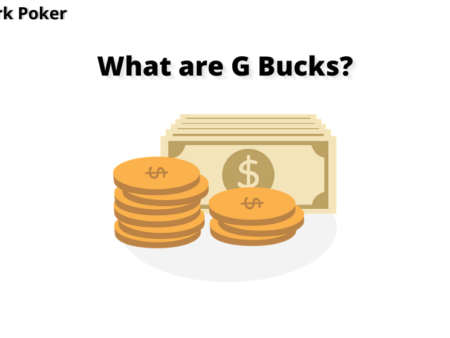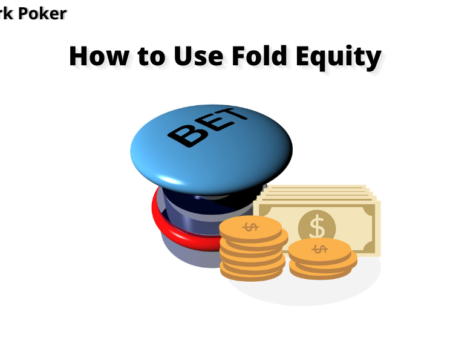

The term break even is often used in all kinds of business activities. When you earn more than the break-even point, you make a profit; if you earn less, you incur a loss. Poker is a serious game, and you should also treat it as a business. In order to make a profit, you should also know the break even percentage in poker. When you cross the break-even percentage, you can expect to make a profit or have a positive expected value (+EV). So, knowing the break-even percentage will help you to make the right decisions in the game.
What is Break Even Percentage in Poker?
Break even percentage in poker is used to find out if your call, bet or raise will have a positive or negative expected value. If your action works more than the break-even percentage (BE%), you will have +EV; and if your action works less than BE%, you will have -EV.
- More than BE% = Positive Expected Value
- Less than BE% = Negative Expected Value
If you don’t know what expected value is, we suggest you read this chapter: How to Use Expected Value in Poker?
How to Calculate Break Even Percentage in Poker?
The break even percentage in poker is pretty simple to calculate.
Break-Even Percentage = Risk/(Risk + Current Pot)
If the current pot is $100 and you decide to bluff by making a half-pot size bet ($50), what will be the break even percentage in poker? Let’s use the simple formula to find out!
Current Pot = $100
Risk = $50 (Bet)
BE% = Risk/(Risk + Current Pot)
= 50/(50 + 100)
= 50/150
= 0.33
So, the break even percentage of your bluff is 33%. If your opponent folds more than 33% of the time, you will have a positive EV as you will win the pot. If your opponent folds less than 33% of the time, you have a negative EV as your opponent might call and you may lose the pot.
BE% = 33%
Opponent Folds More than 33% = Positive Expected Value
Opponent Folds Less than 33% = Negative Expected Value
How to Use Break Even Percentage in Poker?
The break-even percentage is best used while bluffing. It helps you to figure out how much you need to bet in order to make your opponent fold and get a positive EV on your bluff.
Bluffing works best when you have a good read on your opponent. You need to have a close estimate of the number of times (percentage) your opponent will fold to your bet. When you know your opponent’s fold percentage, you can use the break-even percentage to find out how much you should bet to get a +EV on your bluff.
Let’s look at an example.
You are on the button with 7♦ 6♦ in a $10/$20 6-max game. A tight-aggressive player raises to $60 from under the gun, and you decide to call. Everyone else folds.
The pot is now $150 ($10 small blind + $20 big blind + $60 opponent’s raise + $60 call).
The flop reads 8♦ 8♠ 2♣, and your opponent checks. You know that your opponent is a tight-aggressive player who only raises with very strong hands like TT+ and any two broadways from early positions. His range has not connected with the flop. By using your past experience of playing with your opponent, you know that he will fold 40% of the times in such situations if you bet.
How much to bet when you know that your opponent folds 40% of the time? For that, you need to use the BE% formula to calculate different bet sizes to find the right betting amount. That would require a lot of work! But don’t worry, we have done all the calculations for you. Check the table below to find out how much to bet when you know opponent’s fold percentage.
| Opponent’s Fold Percentage | How Much to Bet? |
| 20% | 25% of the Pot (1/4 Pot) |
| 25% | 33% of the Pot (1/3 Pot) |
| 33% | 50% of the Pot (1/2 Pot) |
| 40% | 67% of the Pot (2/3 Pot) |
| 43% | 75% of the Pot (3/4 Pot) |
| 50% | 100% of the Pot (Full Pot) |
| 67% | 200% of the Pot (2X the Pot) |
According to the chart, you need to make a 2/3 pot-size bet (67% of the pot) to get a positive expected value. When you make a 2/3 pot-size bet, your break-even percentage will be 40%. So, you need to bet at least 2/3 pot-size bet (67% of the pot) to get a +EV.
Let’s test if the chart is giving you the right numbers by using the BE% formula.
Current Pot = $150
Risk = $100.5 (67% of the pot)
BE% = Risk/(Risk + Current Pot)
= 100.5/(100.5 + 150)
= 100/5/(250.5)
= 0.40
The break-even percentage is exactly 40%, which corresponds to your villains fold percentage of 40%. So, you need to bet at least $100.5 (67% of the pot) to get a positive EV on your bluff.
Read: Detailed Chapter on How to Bluff in Poker
How to Find Out the Percentage of Your Opponent Folding?
You must have some history of playing with your opponent to get an estimate of his fold percentage. If you play at least a hundred hands with your opponent, you will have some good read on how likely he will fold to your bet. You can never find an exact percentage of your opponent folding. However, you can use tools like Flopzilla or a HUD to get a close estimate of the figure.
Flopzilla
Flopzilla is an excellent piece of software that gives great insights into your opponent’s range. Once you plug in your opponent’s range and feed the community cards, you will get a specific breakdown of how your opponent’s range is going to hit the board. If you see that the board texture is not within the opponent’s range, there is a good possibility that he will fold. If you are planning on using Flopzilla, learn how to use it by going through the manual here: How to Use Flopzilla?
HUD Software
Any HUD software keeps a track of all of your opponent’s moves when you open the table he is playing at. So, you can get a close estimate of how likely your opponent will fold to your bet on different streets. The important stats to check in a HUD are as follows:
Preflop Stats
You can win the pot uncontested on the preflop if you know these stats:
- Fold to 3-bet%: How many times is the opponent folding to a 3-bet?
- Fold to 4-bet%: How many times is the opponent folding to a 4-bet?
- Fold to Steal%: If the opponent is in the blinds, how many times is the opponent folding to raise?
- Fold to Squeeze: How many times is the opponent folding to preflop bluffs when there has already been a raise with one or more callers?
Flop Stats
- Fold to Cbet: If you have raised on the preflop, what is the percentage of your opponent folding to your cbet on the flop?
- Fold to Flop Raise: What is the percentage of your opponent folding to your raise on the flop?
Turn Stats
- Fold to Turn Cbet: If you cbet on the flop, what is the percentage of your opponent folding to your cbet on the turn?
- Fold to Turn Raise: What is the percentage of your opponent folding to your raise on the turn?
River Stats
- Fold to River Cbet: If you cbet on the turn, what is the percentage of your opponent folding to your cbet on the river?
- Fold to River Raise: What is the percentage of your opponent folding to your raise on the river?
Also Read: How to Use Fold Equity in Poker?
Conclusion
Poker is a mathematical game where you can apply maths even while bluffing to know how much you need to bet to get a +EV. Memorize the chart and have the numbers at your fingertips so that you always make the right bet size to make your opponent fold effectively. Always have a mathematical approach while playing poker to make the right decisions, even while bluffing!




